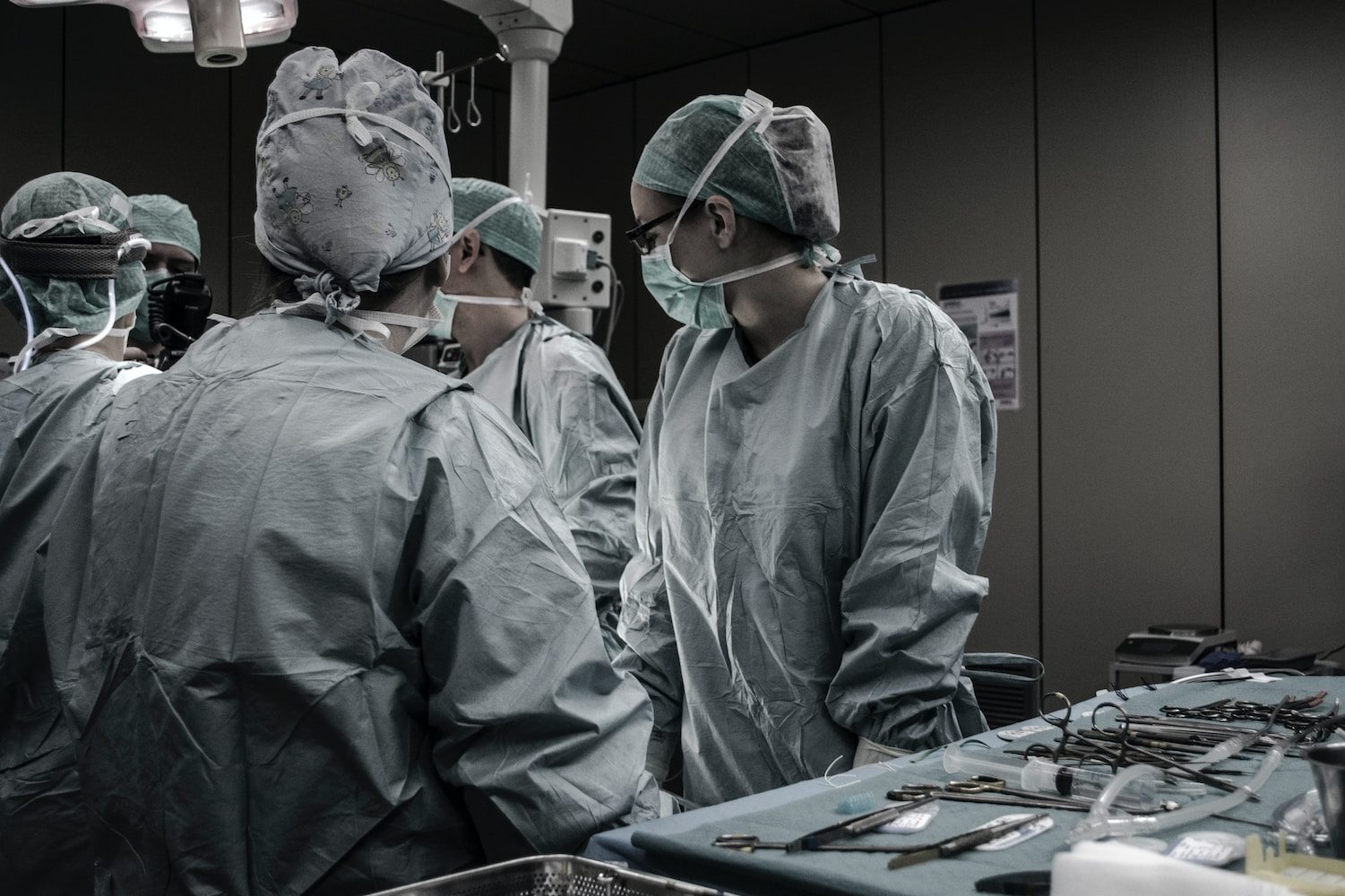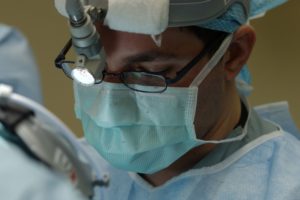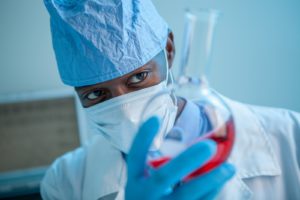
Testicular tumors, while not as common as some other forms of cancer, can have a profound impact on a man’s reproductive health. What is the relationship between testicular tumors and sperm count, and what are their adverse effects on sperm production and fertility?
Testicular tumors, as the name suggests, originate in the testicles, which play a pivotal role in the production of sperm. When these tumors develop, they can disrupt the delicate process of spermatogenesis, the formation of sperm cells. This disruption occurs because the tumors can interfere with the normal functioning of the testicles, impeding their ability to produce healthy sperm.
Understanding Testicular Tumors and Their Impact on Sperm Production
The presence of a testicular tumor can lead to a decline in sperm quality, motility, and count. This decline in sperm production can make it challenging for individuals and couples to conceive naturally. Addressing and treating testicular tumors is not only essential for overall male health but also for their sperm production.
Timely detection and treatment of testicular tumors are crucial in minimizing their impact on sperm production. The longer a tumor goes untreated, the greater the risk of irreversible damage to the testicles and sperm production. This underscores the importance of regular testicular self-exams and medical check-ups for early detection.
Source: Male Infertility and the Risk of Developing Testicular Cancer
Understanding the type and stage of the testicular tumor is vital in determining the appropriate treatment approach. Different types of tumors may respond differently to treatments such as surgery, radiation therapy, or chemotherapy. Consequently, an accurate diagnosis and a personalized treatment plan are essential steps toward addressing the tumor and preserving or restoring sperm production.
Treatment Options for Testicular Tumors
When it comes to addressing testicular tumors and their impact on sperm production, there are several treatment options available. Each approach has its own set of benefits, risks, and considerations, and the choice of treatment depends on factors such as the type of tumor, its stage, and the individual’s overall health.
- Surgery for Testicular Tumors: Surgery is often the preferred treatment for testicular tumors, especially when the tumor is localized and hasn’t spread to other parts of the body. The surgical procedure, known as radical inguinal orchiectomy, involves the removal of the affected testicle. While the loss of one testicle may raise concerns about fertility, the remaining healthy testicle can typically compensate for sperm production, allowing for normal sperm levels. It’s essential to note that with early detection and prompt surgical intervention, the impact on fertility can be minimized.
- Radiation Therapy: Radiation therapy may be recommended for some cases of testicular cancer, particularly when the cancer has spread to nearby lymph nodes. Radiation targets and destroys cancer cells but can also affect healthy cells in the process. As a result, radiation therapy may lead to temporary or permanent damage to the remaining testicle’s ability to produce sperm. To preserve fertility, individuals may consider sperm banking before undergoing radiation treatment.
- Chemotherapy: Chemotherapy is typically reserved for more advanced cases of testicular cancer where the cancer has spread beyond the testicle. While chemotherapy can be highly effective in treating cancer, it can also have a detrimental impact on sperm production. The drugs used in chemotherapy may impair sperm quality and count. As with radiation therapy, sperm banking is a proactive step for individuals who plan to undergo chemotherapy to preserve their fertility.
Choosing the most appropriate treatment option depends on a thorough evaluation by a healthcare provider, considering the individual’s specific circumstances and preferences. It’s important to discuss fertility preservation options with the medical team before starting treatment, as proactive measures like sperm banking can offer hope for future family planning.
Source: Treatment Options for Testicular Cancer
Understanding these treatment modalities is essential for making informed decisions and taking proactive steps to preserve or restore sperm production.
Surgery for Testicular Tumors
Surgery is often the primary treatment choice for testicular tumors, especially in cases where the tumor is localized within the testicle and hasn’t spread to other parts of the body. Here is a comprehensive overview of surgical treatment for testicular tumors, explaining the procedure, its effectiveness, and how it can positively impact sperm production and fertility.
The Surgical Procedure
The surgical procedure used to treat testicular tumors is known as radical inguinal orchiectomy. During this surgery, the affected testicle is removed entirely.
The procedure involves making an incision in the groin area to access the testicle and its associated structures.
Source: Orchiectomy
Once the testicle is removed, it is sent for pathological examination to determine the type and stage of the tumor. Removing the affected testicle is a crucial step in halting the progression of the cancer and preventing its spread to other parts of the body.
Preserving Fertility
One common concern among individuals facing testicular tumor surgery is the impact on fertility. The good news is that the remaining healthy testicle can typically compensate for sperm production. While the removal of one testicle may lead to a temporary decrease in sperm count, it is often not significant enough to cause infertility. Many men who have undergone unilateral orchiectomy (removal of one testicle) are still able to father children naturally.
Early Detection
Early detection of testicular tumors is paramount to preserving fertility. When testicular cancer is detected at an early stage and promptly treated with surgery, the chances of preserving sperm production and fertility are significantly higher. This highlights the importance of regular testicular self-exams and routine medical check-ups for early tumor identification.
Psychological Impact
It’s important to acknowledge the psychological impact of testicular tumor surgery. For many men, the loss of a testicle can be emotionally challenging. However, it’s essential to remember that cancer treatment, including surgery, aims to save lives first and foremost. Support from healthcare professionals and counseling services can help individuals cope with these emotional challenges and adjust to the changes in their bodies.
Surgical removal of a testicular tumor through radical inguinal orchiectomy is a highly effective treatment option, especially when the cancer is localized. While there may be concerns about fertility, the remaining testicle can often maintain sperm production, and early detection and treatment are key factors in preserving both health and fertility.
Source: Surgery for Testicular Cancer
Radiation and Chemotherapy for Testicular Tumors
Radiation therapy and chemotherapy are alternative treatment modalities for testicular tumors; particularly when surgery may not be the first choice due to factors such as tumor type, stage, or the individual’s overall health.
Radiation Therapy
Radiation therapy is employed when the testicular tumor has spread to nearby lymph nodes or when it is of a type that responds well to radiation. During this treatment, high-energy X-rays or other forms of radiation are directed at the cancerous cells to destroy them. While radiation therapy can effectively target cancer cells, it can also affect surrounding healthy tissues, including the remaining testicle.
Impact on Sperm Production
Radiation therapy may lead to temporary or permanent damage to the testicle’s ability to produce sperm. The extent of this damage depends on factors such as the radiation dose, the duration of treatment, and the individual’s unique response. The closer the radiation is to the remaining testicle, the higher the risk of sperm production impairment.
Fertility Preservation Strategies
To mitigate the potential impact of radiation therapy on fertility, individuals may consider sperm banking before starting treatment. Sperm banking involves the collection and preservation of sperm for future use in assisted reproductive techniques such as in vitro fertilization (IVF) or intrauterine insemination (IUI). This proactive step allows individuals to preserve their fertility options and the possibility of having biological children after completing radiation therapy.
Chemotherapy
Chemotherapy is typically reserved for advanced cases of testicular cancer, where the tumor has spread beyond the testicle. Chemotherapy involves the use of powerful drugs to target and destroy cancer cells throughout the body. While chemotherapy is highly effective in treating cancer, it can have an impact on sperm production.
Impact on Sperm Production
Chemotherapy drugs may impair sperm quality, motility, and count. The degree of impact varies depending on the specific drugs used and the individual’s response. It’s important to note that some men may experience temporary infertility during chemotherapy, while others may face long-term challenges.
Fertility Preservation Strategies
As with radiation therapy, individuals planning to undergo chemotherapy should consider sperm banking before treatment begins. This proactive measure can provide a safety net for future family planning and reduce the potential emotional burden associated with fertility concerns.
Radiation therapy and chemotherapy are valuable treatment options for testicular tumors in specific cases. However, they can have varying degrees of impact on sperm production and fertility. Discussing fertility preservation strategies with healthcare providers before starting treatment is essential for individuals who wish to maintain their options for having biological children in the future.
Source: Radiotherapy in testicular germ cell tumors
Restoring Fertility After Testicular Tumor Treatment
After successfully treating a testicular tumor, many individuals are eager to restore their fertility and move forward with family planning.
- Post-Treatment Recovery: Recovery after testicular tumor treatment varies depending on the type of treatment received and individual factors. In the case of surgery, recovery typically involves a brief hospital stay and a few weeks of rest to allow the body to heal. Radiation therapy and chemotherapy may have their own sets of recovery challenges, including managing side effects and monitoring for any long-term effects.
- Regular Follow-Up with Healthcare Providers: One of the critical aspects of post-treatment care is regular follow-up with healthcare providers. These check-ups are essential for monitoring any signs of recurrence and assessing overall health. Discussing fertility concerns with your healthcare team during these appointments is crucial. They can provide guidance on when it’s safe to resume attempts at conception and address any potential fertility-related issues that may have arisen during treatment.
- Lifestyle Changes to Support Fertility: Making certain lifestyle changes can positively impact fertility. These changes may include maintaining a healthy weight, avoiding excessive alcohol consumption, quitting smoking, and managing stress. Additionally, adopting a balanced diet rich in antioxidants, vitamins, and minerals can promote sperm health and production.
- Fertility Evaluation and Treatment Options: If fertility challenges persist after testicular tumor treatment, a fertility evaluation by a reproductive specialist is advisable. This evaluation may include a semen analysis to assess sperm count, motility, and morphology. Based on the findings, the specialist can recommend appropriate fertility treatments such as intrauterine insemination (IUI) or in vitro fertilization (IVF). In some cases, fertility treatments may be combined with assisted reproductive techniques like intracytoplasmic sperm injection (ICSI) to achieve successful conception.
- Hope and Encouragement: It’s essential to approach the journey of restoring fertility with hope and optimism. Many individuals who have overcome testicular tumors have gone on to become parents and build the families they desire. Modern advancements in fertility treatments and assisted reproduction have provided new possibilities for those facing fertility challenges.
- How To Adjust Diet For Better Sperm Health And Count?
- How to Improve Sperm Quality by Reducing Stress and Managing Anxiety?
- How To Quit Harmful Habits And Increase Sperm Count?
- How to Treat Obesity and Maintain Healthy Weight In Order To Increase Sperm Count?
- How To Treat Oxidative Stress and Improve Sperm Health?
Restoring fertility after testicular tumor treatment is a process that involves patience, proactive healthcare management, and a positive outlook. While the impact of treatment on fertility can vary, seeking guidance from healthcare providers, making lifestyle adjustments, and exploring fertility evaluation and treatment options can help individuals and couples achieve their dreams of parenthood.
Source: Fertility after testicular cancer
Remember that with the right support and resources, the goal of starting or expanding a family can remain within reach.
Conclusion: The Benefits of Treating Testicular Tumors on Sperm Production
Treating testicular tumors not only addresses a potentially life-threatening condition but also holds significant benefits for sperm production and overall fertility. Here are the key advantages of timely and effective treatment for testicular tumors in the context of improving sperm count, quality, and fertility prospects.
Preservation of Sperm Production
One of the primary benefits of treating testicular tumors is the preservation of sperm production. By removing or effectively managing the tumor, healthcare providers can often safeguard the functionality of the remaining healthy testicle. This ensures that the testicle can continue its essential role in producing sperm, which is crucial for natural conception.
Restoration of Fertility
Successful treatment of testicular tumors offers individuals the opportunity to restore their fertility. While the impact of treatment on sperm production may vary, many men who have undergone surgery, radiation therapy, or chemotherapy can still conceive children naturally. The resilience of the male reproductive system allows for fertility to be regained, providing hope for individuals and couples who aspire to start or expand their families.
Early Detection for Optimal Outcomes
Early detection of testicular tumors plays a pivotal role in achieving the best possible outcomes for both cancer treatment and fertility preservation. Regular testicular self-exams and routine medical check-ups are essential in identifying tumors at an early stage when they are most treatable. By addressing testicular tumors promptly, the risk of irreversible damage to sperm production is minimized.
Fertility Preservation Options
For individuals who may undergo treatments with potential fertility implications, such as radiation therapy or chemotherapy, there are proactive measures like sperm banking available. These options empower individuals to take control of their fertility by preserving sperm samples for future use in assisted reproductive techniques. Sperm banking provides peace of mind and additional opportunities for family planning.
Hope for Parenthood
Perhaps one of the most profound benefits of treating testicular tumors on sperm production is the hope it offers for parenthood. The desire to have children and build a family is a fundamental human aspiration. By addressing and overcoming testicular tumors, individuals can hold onto the dream of becoming parents, even in the face of adversity.
Treating testicular tumors not only saves lives but also helps preserve and restore fertility. The interconnectedness of cancer treatment and fertility underscores the importance of early detection, informed decision-making, and proactive steps to protect sperm production.
Source: Preserving Fertility in Males with Cancer
With advances in medical care and fertility treatments, individuals who have faced testicular tumors can look forward to a future filled with the possibility of parenthood and the joy of building a family.


